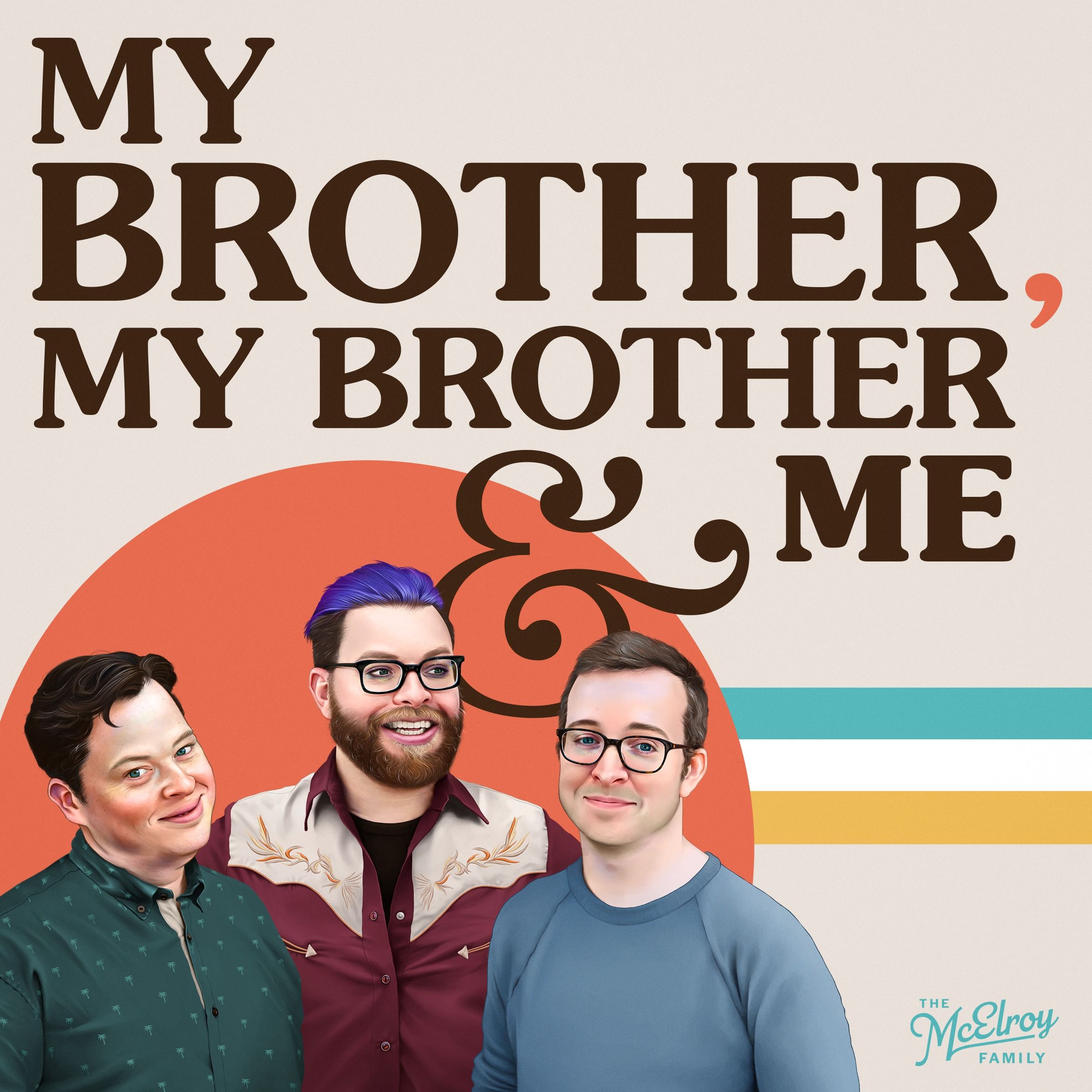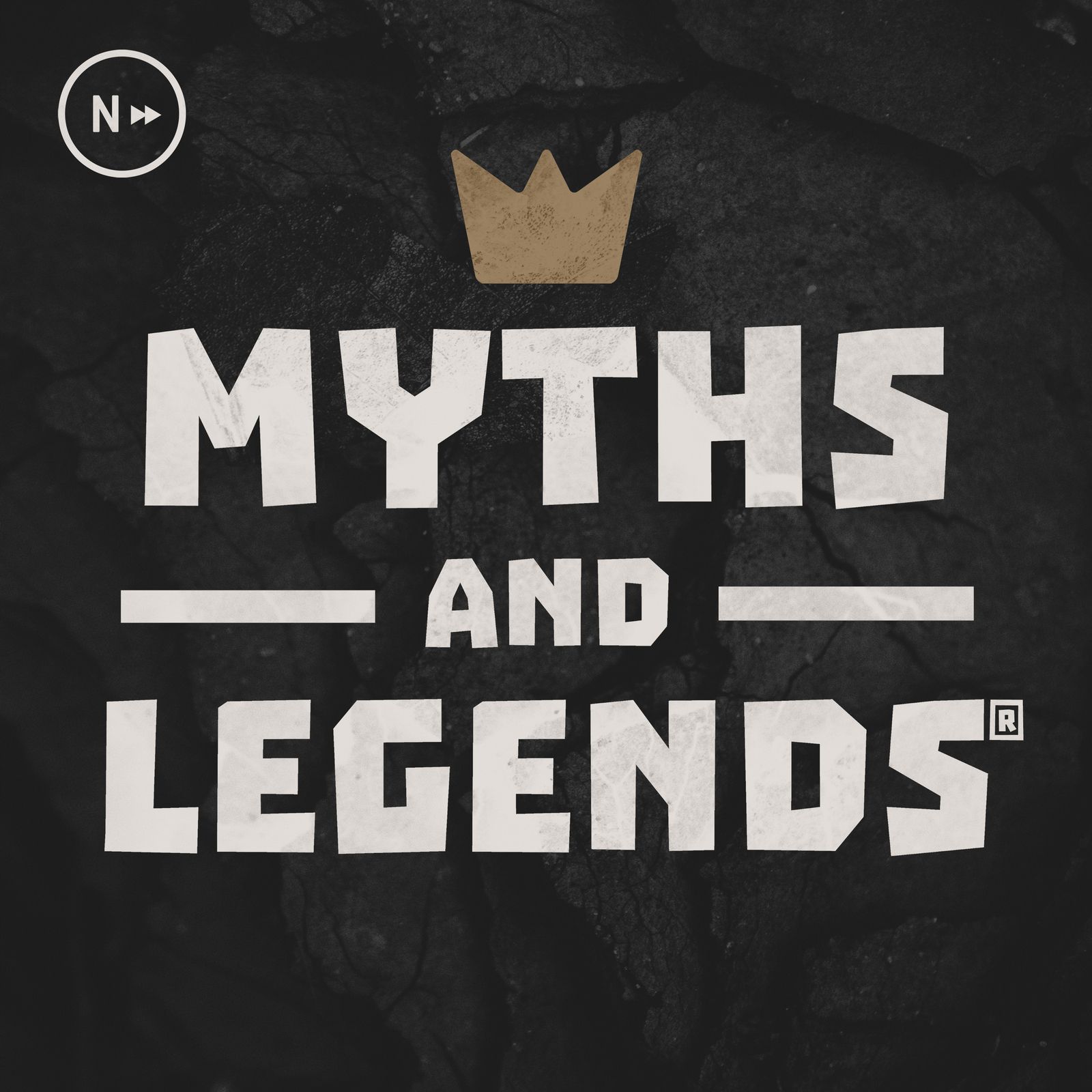
Myth Monsters
A bite sized look into the monsters of global folklore, cryptozoology and mythology with your host, Erin. Jump in and learn about your favourite monsters from Gorgons to Kelpies, to Wendigos to Bigfoot. Stay spooky every Thursday with a new episode with a new monster from another culture. Get in touch on Twitter at @mythmonsterspod
Myth Monsters
Rusalka
For this week's episode, we're swimming over to Eastern Europe for the tempting Rusalka from Slavic mythology! Why do these monsters have such long hair? How are they related to leaving flowers on gravestones? Find out this week!
You can find us on:
Social media:
INTRO:
Hello and welcome to Myth Monsters, my name is Erin and I’ll be your host for these little snack bite size podcasts on folklore and mythical monsters from around the world.
These podcasts focus on the actual cryptids, folklore and mythic monsters from global mythology, rather than focusing on full stories of heroes and their big adventures.
I’ll also be dropping in some references that they have to recent culture and where you can see these represented in modern day content so you can learn more, and get as obsessed as I am about these absolute legends of the mythological world.
Before we start, apologies for the radio silence over the last few weeks - I’ve typically been really busy and also really unwell and thought I’d put myself first for a bit, but I’m back to 100% again thankfully!
DESCRIPTION:
For this week, we’re covering the one I said we would three weeks ago, so we’re heading over to Eastern Europe for the wonderfully spooky Rusalka from Slavic mythology!
The Rusalka is typically described as two things really, one is a benevolent water nymph, and the other an evil water spirit. However, what all accounts can agree with is what they look like, which is a universally beautiful woman, who has long dark or green hair down to their knees, disproportionately long limbs and pale shiny skin.
They are always female and always stark naked when you spot them, and you can typically find them around river banks or lakes in Slavic countries, where they sit on the beach, in willow trees or linger in the shallows. When they weren’t out and about, they would live in crystal palaces at the bottom of the rivers, waiting for spring, when they would come out and hunt.
Unfortunately, these ladies are often evil and their main purpose is to drown men in the rivers and lakes they call home. They do this by luring the men by using either their body or their voice, where they would entangle their long hair around the feet of the victim and pull them under, where their body would become slippery to the touch and reveal a more distorted form of their skin decaying and hair falling out, and they would tickle the man until he drowned as they laugh.
These monsters are very often considered to be similar to mermaids or especially, sirens from Greek mythology. Half-fish or half-bird, half-woman temptresses from the water, who sing to lure their prey into their clutches, so they can drown them for their own amusement - however, the Rusalka are slightly different, as they’re not half hybrids, they have complete human bodies, complete with legs, and are able to survive on land for a week a year.
There are beliefs that the Rusalka were able to change their shape based on a man’s preferences to their appearance, however, it is debated as it’s mentioned in folklore that they are universally attractive, meaning they wouldn’t need to adapt to attract them, which holds more respect within the Slavic folklore space for them. They are able to transform their bodies into that slippery form, and control their hair as well as their bewitching voices - however, beyond this, they don’t have many more powers.
Rusalka are actually considered spirits because they are undead, you become a Rusalka by drowning in a body of water through suicide or murder, usually because you have been wronged by a man. This was often because you were in an unhappy marriage, were jilted, abused or you were pregnant with an unwanted or forbidden child, which also made the women ‘unclean’. Once you are reborn as a Rusalka, you would live out a predetermined time as one, but your main mission is to seek revenge on all men until the one who wronged you walks on by, and then you are released.
They emerged from their homes in the springtime, where they would dance and sing along the riverbeds and encourage the growth of rye. This is because earlier accounts of Rusalka were that they were benevolent water spirits, who would transfer the gift of water to the fields and nurture the crops as well as being fertility symbols for local women. We’ll get onto why this changed over to their evil counterparts later in their origins - but their task of watering the rye did stick in these evil versions too. After the first thunder, they would return to their homes under the waves, waiting for next year's spring.
You can’t kill a Rusalka, because they are spirits and all. However, you’d generally try and avoid the riverbanks if you were a man around this time - women would typically avoid them too, as Rusalka would harass them with slurs and horrible names as they passed, especially young women within childbearing age.
ORIGIN:
Moving onto etymology, first they have lots of other names within specific Slavic countries, such as Vodyanitsa in Russian meaning ‘she from the water’ or ‘water maiden’. Kupalka meaning ‘bather’, Shutovka meaning ‘prankster’, Loskotukha meaning ‘she who tickles’ are also other Russian ones. In Ukraine, they were called Mavka meaning ‘the dead’ - but they’re often considered another monster entirely.
Now the actual word Rusalka is Slavonic and derives from the word rusalija which came from the Latin rosalia, which was a name for a main Roman festival, Rosalia.
Rosalia was the festival of roses, celebrated from May to July and was a festival commemorating the dead, much like Dia De Los Muertos is in November in Mexico as a modern comparison. Families would put roses on their loved ones who had passed graves, which led to us continuing to do this to this day as a memorial.
It’s also known as the Pentecost and is now a Christian holiday, celebrating the 49th day after Easter, which sounds like it’s unrelated but hear me out. In history, before Christianity, holidays at this time of year, which is usually mid-June, are associated with spirits and fertility, so it made sense that these monsters were named with it in mind.
Speaking of which, before we move on - I mentioned that the Rusalka were only able to move about on land for a single week and that is related to these two holidays. During Rosalia, where the dead were honoured, the spirits were able to walk amongst the living and were able to hang about more freely by their river-y homes in early June, and it made them the most dangerous. It was even named Rusalka week in honour of them, but swimming was forbidden completely and the Rusalka were ritually banished at the end of the week as entertainment up to the 1930’s if you can believe it! It’s otherwise known as Green week or Whitsuntide week, and is often worked into celebrations of Trinity Sunday in the modern era.
Now onto their actual history, unfortunately there isn’t much on these specifically I’m afraid, which is wild following how much we had on their etymology. But we know that they existed well before the 19th century or 1800 AD, and that they are most likely from pagan Slavic mythology, which was around during the Middle Ages, so from around the 8th and 13th centuries, however was persistent til the 16th century in some parts.
This is where we had the benevolent water fertility spirit version of the Rusalka, and unfortunately I can’t find why this switched over specifically in the 19th century to this evil version, I imagine and I hate to point the finger, but it was probably something to do with Christianity in the region. The idea of shaming women for being unclean due to something a man has done to them is pretty common within folklore, but also within old-timey Christian beliefs I’m afraid - so I’m going to hazard a guess with that.
Of course, we do have their link to Rosalia and Pentecost, but we also have an expression that we can link to the Rusalka, ‘Walks like a Rusalka’ is applied to girls with unkempt hair in Slavic regions, and is still used today. Rusalki and their hair are linked to Slavic traditions of unmarried women having unbraided hair, as once they were married, their hair would be tightly braided and would usually be worn under a headdress - so to be seen with untidy hair would imply that you were unmarried or potentially, a hair-tickling, man-drowning monster.
I do have some famous Rusalka stories to share though, such as one named Dana from Russian folklore. Her stepmother was jealous of how beautiful she was and drowned her when they went swimming at a water mill. Her husband mourned her and one day, he stayed late at the place of her death and saw a bunch of Rusalki on the mill wheels, including his late wife. He dived into the river and the Rusalki followed him, tying him up in their hair, Dana eventually rushed to him and told him to leave before sunrise, and he refused saying that he’d rather die than live without her. She kissed him and he became the water king of the river.
Another story is one of Kostroma, who was a fertility goddess linked to Rusalkas, as she drowned herself in a lake when she discovered her new husband was actually her brother. She lured every man who met her to their death and eventually the gods took pity on her and turned her and her brother into a single flower.
Another Rusalka, Marina, was a young woman who drowned herself in the river Volga out of love for a man, and it was said that she could transform into a swan when she swam. She often sat looking at her ex-lovers house, who had married someone else and eventually, she charmed him and took him underwater to live happily ever after.
Lastly, there is Moryana, who was the daughter of the mythical Sea Tsar from Slavic folklore. She was incredibly beautiful and had hair like sea-foam, and took the form of a fish when she swam in deep water. She ruled the sea winds and storms and came ashore in the evenings to observe humans - which she could choose to bless with bad or good sea voyages.
In reality, I imagine this folklore tale was to keep people away from river beds with large amounts of plant life that could pull you under. If you can imagine the Rusalka’s hair being seaweed that pulls you under the water, I can totally see this as a reason to invent a monster that tempts you into it. Rivers are dangerous, now and then, so you have to keep your wits about you.
I’ve mentioned some mythically similar monsters, such as sirens already, but these monsters are also very similar to the French Melusine, which the Starbucks Siren actually is with the split tail, and they sing to tempt people in, but typically are more benevolent than evil. Or there is the Scandinavian Nixie or Nokken, who were river spirits who would tempt people to live with them under the water, which realistically meant drowning, but in a more, let us love you way. They were also able to transform into water horses like the Scottish Kelpies too, but you can hear more about them in their episode, which was a long time ago, but worth listening to if you’re interested!
CULTURAL SIGNIFICANCE:
Now onto modern media, there are a few bits for Rusalka and I’ve only topped up a few bits with other Siren media, just as they are similar enough!
For art, have a look at Rusalka from 1928 by Sergey Solomko, Rusalky from 1879 by Konstantin Makovsky or The Mermaids or Rusalki by Ivan Kramskoi from 1871 for some gorgeous portrait art from the Slavic regions, actually portraying Rusalkas rather than generic mermaids.
Probably the most famous thing about Rusalka is the opera named after them. If you google Rusalka, it’s the first thing you’ll see pop up - and it’s an incredible opera, if you have a chance to see it, I really recommend it. It follows the story of a Rusalka, who was once a princess who becomes one - if you can find a copy online, have a look! If you’re in the UK, ENO at the Coliseum in London often have this in their opera season and their operas are my favourite at least.
In movies, we have; Rusalka, Mavka: The Forest Song, The Mermaid: Lake of the Dead, Spaceman, Forest Song, Black Panther: Wakanda Forever, Siren, O Brother, Where Art Thou?, Mermaids, Ice Age: Continental Drift, Sinbad: Legend of the Seven Seas, The Twelve Tasks of Asterisk & My Little Pony: Equestria Girls Rainbow Rocks.
For TV, we have; The Witcher, Charmed, Tidelands, Supernatural, Red Dwarf, Once Upon A Time, My Babysitter’s a Vampire, So Weird, What We Do In The Shadows, Saturday Night Live, Extreme Ghostbusters, The Backyardigans, Spongebob Squarepants, Arthur, The Simpsons, Lloyd in Space, Martin Mystery, American Dragon: Jake Long, Disenchantment, The Godzilla Power Hour, Ducktales & Aqua Teen Hunger Force.
In video games, we have ones such as; Heroes of Might and Magic, The Witcher 3, Castlevania: Order of Ecclesia, Bravely Default, The Incredible Adventures of Van Helsing, Axiom Verge, Reverse: 1999 & World of Warcraft.
My book recommendation this week are for The Slavic Myths by Noah Charney and Svetlana Slapsak, Slavic Spirits and Demons: Tales of Myth, Legend and Faith by Perun Mountain and Baba Yaga's Book of Witchcraft: Slavic Magic from the Witch of the Woods by Madame Pamita for some brilliant Slavic myths including this one, but also other monsters we’ve covered or are yet to in this great, often overlooked, world mythology.
DO I THINK THEY EXISTED?
Now it’s time for, do I think they existed?
You probably know what I’m going to say for this one if you’ve been listening for a while and you’re going to say I’m copping out, BUT listen - water monsters are the ones that I’m most sure about in terms of existing in reality. Mainly because we’ve discovered so little of the water, and because we can’t follow them into it, any reports can’t really be scoped out.
Do I think there are watery women out there tempting people in with them to tickle them to death - hey maybe, maybe that’s why perfectly healthy people die in river accidents every year. I used to live on the River Avon, which is a very fast flowing river through Somerset, and a lot of people die there every year - maybe they’re drowning, maybe they were pulled in by river creatures we don’t believe exist - but who knows!
In all seriousness, please be careful around rivers and lakes this summer - just as we’re approaching that time of year. They can be deceptively fast and dangerous, even if you’re a good swimmer - so please take caution, even if that means imagining a kraken under there to put you off! I know that’s what I do, even in pools I have a weird fear that a shark is going to eat me the whole time, but maybe that’s just me.
Rusalkas are definitely up there as one of my personal favourite water monsters. I love the idea of these wronged women becoming these revenge-driven beasts who tickle you to death and I think it's good for them, honestly. So gentlemen, be wary if a women you have wronged invites you into a pool this summer, she might be ready to grab your feet and torture you til you drown with little tickles.
But what do you think? Did the Rusalka haunt the rivers, lakes and estuaries of Eastern Europe? Let me know on social media!
OUTRO:
An epic monster this week, I’m glad we got to cover this one. I love anything sea based, but we especially love a siren or mermaid like lady, so it’s about time we had the Eastern European type!
Next week, we’re heading over to the UK, but to a region we’ve not been to before - we’re going over to the beautiful Wales for the terrifying Cwn Annwn, keep an ear out for their howling next week to avoid being pulled into the underworld!
Just as a pre-warning, I’m off on holiday from May 17th-31st as I’m going to Disneyworld in Florida. If you’ve been listening to the show for a few years, you’ll know I go to a different Disney park in the world every year, and this time, it’s the big one! During this time, there won’t be any episodes, but I’ll be sure to have one ready for the week I come back on June 5th.
For now, thank you so much for listening, it’s been an absolute pleasure. If you enjoyed this podcast, please give it a rating on the service you’re listening on - I’ve got loads of social media for any questions, or suggestions on what monsters to cover next and I’d love to hear from you. The social media handles for Tiktok, YouTube and Instagram are mythmonsterspodcast, and twitter is mythmonsterspod and I’m now also on BlueSky under mythmonsters. But all of our content can be found at mythmonsters.co.uk, and you can also find us on Goodpods, Buymeacoffee and Patreon if you want to help me fund the podcast too.
Come join the fun though and share this with your pals, they might love me as much as you do.
But for now, stay spooky and I’ll see you later babes.
Podcasts we love
Check out these other fine podcasts recommended by us, not an algorithm.

FolkLands
Tim Downie, Justin Chubb
Chatsunami
Satsunami
The Howdy Beans Podcast!
Luke The Elder Bean!
My Brother, My Brother And Me
The McElroys
Myths and Legends
Jason Weiser, Carissa Weiser, Nextpod
Lore
Aaron Mahnke
Exploration: Dreamland
Exploration: Dreamland
The Neatcast
Jeremy, Zack, Mike
Effin' Cultured
Bobby, Griff, and The Rik
